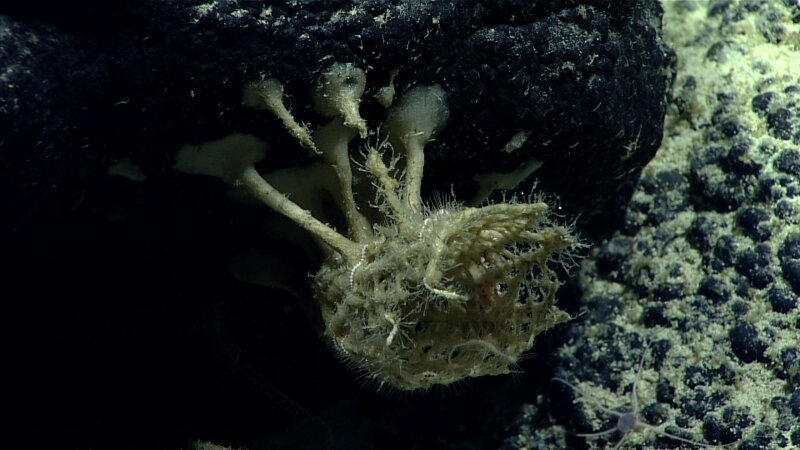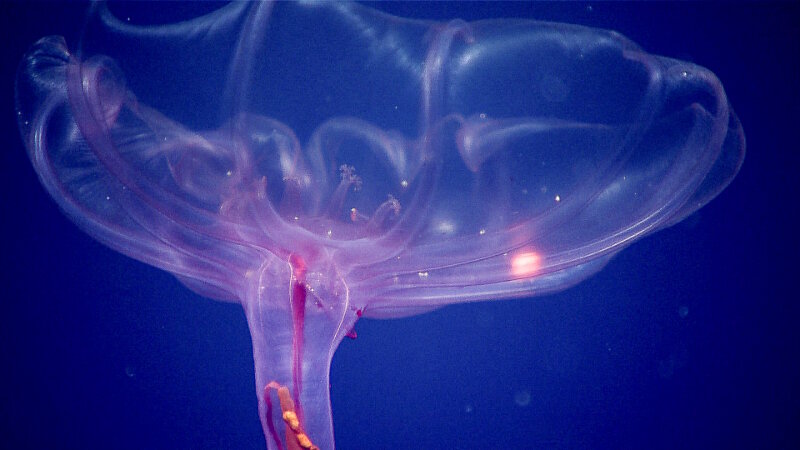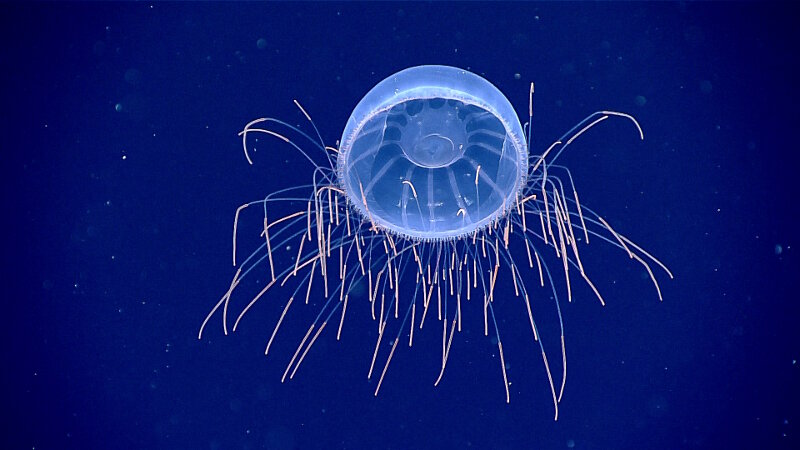-

We found this sponge attached to a rock in an unusual manner. Notice the base of the sponge looks like it has foot-like appendages. Image courtesy of the NOAA Office of Ocean Exploration and Research, Mountains in the Deep: Exploring the Central Pacific Basin. Download larger version (jpg, 851 KB).
-

This pelagic holothurian, or deep-sea swimming cucumber, is unusual in appearance when compared with other sea cucumbers because of its resemblance to a jellyfish. We found this one during midwater transects at ~1,400 meters (4,595 feet) depth. We have seen many of these sea cucumbers so far on this expedition. Image courtesy of the NOAA Office of Ocean Exploration and Research, Mountains in the Deep: Exploring the Central Pacific Basin. Download larger version (jpg, 1.3 MB).
-

We found this hydromedusa, Halitrephes, at about 1,200 meters (3,935 feet) depth. The ends of its tentacles are packed with nematocysts (stinging cells), which make them appear especially bright. Image courtesy of the NOAA Office of Ocean Exploration and Research, Mountains in the Deep: Exploring the Central Pacific Basin. Download larger version (jpg, 1.4 MB).